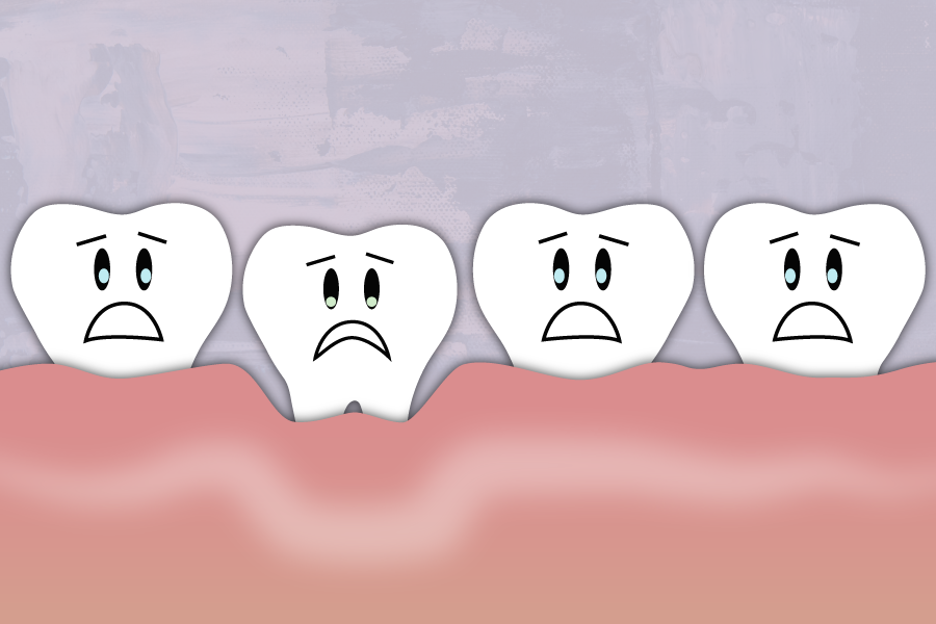Can receding gums grow back naturally?
Have you ever noticed how quickly your mouth heals when you've bitten your cheek or burned the roof of your mouth? That's because your mouth heals faster than many other parts of your body. Unfortunately, this doesn't include your gums, and you'll need help from a dentist or periodontist if they're damaged.
Your gum tissue
Healthy gums will fit snugly around your tooth, protecting it. If gum tissue recedes, that means the gum tissue pulls back and exposes more of the tooth and even the tooth's root. That means acids can attack more of the tooth and its root, and the root is vulnerable to decay because it doesn't have an enamel layer.
Receding gums won't grow back because gum tissue doesn't regenerate like many other tissues in the body. And while receding gums can increase your risk of tooth decay, they are often the sign of a more serious oral health condition.
What causes receding gums?
The two most common causes of receding gums are:
1. You're brushing too hard
Aggressive tooth brushing can damage gum tissue. Always use a soft-bristled tooth brush and hold it with just your fingertips. Don't press the brush head against the teeth. Remember, you're not scrubbing stubborn stains, you're wiping bacteria from your teeth and gums.
2. Gum disease (periodontal disease)
In many cases, receding gums are caused by periodontal disease, and chances are you have it. Nearly half of US adults over age 30 have some form of periodontal disease, and 70% of those over age 65 have it.
Gum disease starts when plaque builds up on teeth and gums. When the plaque isn't brushed away each day, the bacteria in the plaque irritate and inflame the gum tissue. Eventually, the inflammation can destroy the bone structure beneath your teeth and gums. And when that bone structure decreases, your gums pull back too, giving more space for more bacteria to make the inflammation even worse.
The early stage of gum disease - gingivitis - makes your gums look red and swollen, and they will bleed easily when you brush. Your dental care team will recognize this during your regular visits to the dentist. Although you can't regrow your gum tissue, a thorough cleaning can reset your oral health if you maintain healthy brushing and flossing habits.
If periodontal disease isn't treated, it can lead to periodontitis, and that's when your dentist may refer you to a specialist called a periodontist to help get your oral health back in order. In advanced stages of periodontitis, the mouth's bone structure and gums aren't able to keep teeth in place and your teeth will get loose and fall out or will need to be extracted.
3. Teeth grinding (bruxism)
Grinding or clenching your teeth causes your teeth to move or rock back and forth, which causes pressure on the surrounding tissues that leads to swollen ligaments that results in gum recession.
Treatments for receding gums
Good daily dental hygiene and regular dentist visits will keep your mouth healthy and prevent gum disease. But if gum disease occurs, your dentist has different levels of treatments to help improve your oral health. Each treatment has the same goals: get rid of plaque, reduce bacteria, and protect your teeth from more damage.
* Scaling and root planing
Your dentist or hygienist will use special tools - a manual scaler or ultrasonic equipment - to remove plaque and tartar above and below the gum line, and may also remove damaged tissue to help with the healing process. Once this step of scaling is done, the next step is called root planing. Root planing smooths your tooth's surface which makes it easier for healthy gum tissue to reattach.
* Drug therapy
Short courses of oral antibiotics, as well as antibiotic and antiseptic medications applied directly to the gums can reduce bacteria and inflammation.
* Surgery
In more advanced cases, the periodontist may surgically remove the damaged gum tissue and reduce the depth of the tooth pocket. And in some cases surgical grafts may be used to replace gum tissue or bone structures. These procedures are generally recommended only when it will prevent tooth loss and after other treatments haven't stopped the periodontal disease from getting worse.
For any treatment, maintaining good dental hygiene habits is key to prevent plaque from coming back to start the gum disease process all over again. Brush (softly) twice a day with fluoride toothpaste, floss regularly, and make and keep your regular dentist visits.

